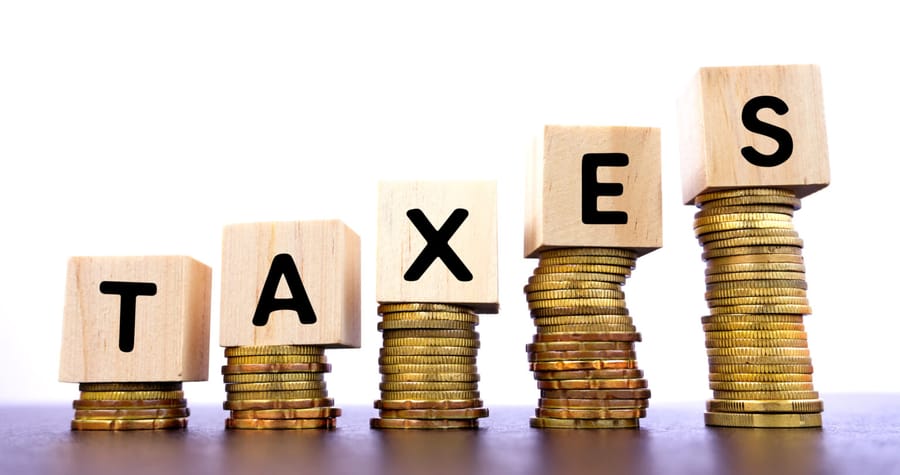Buying property in Europe is exciting, but do you know how much you'll pay in taxes? Property tax in Europe varies widely, and some countries barely charge anything. Want to keep more of your rental income? Or find a tax-friendly place to invest? Let’s break down the numbers for 2025 and see which locations offer the best deals for property buyers.
Where Are the Highest and Lowest Property Taxes in Europe?
Some countries love taxing real estate, while others prefer to keep rates low. Knowing the difference can save you thousands. Below, we explore where property taxes are sky-high and where they’re practically non-existent. The right choice can impact not just your costs but also the profitability of your investment.
Countries with the Highest Property Taxes

If you’re buying property in one of these countries, be prepared for hefty tax bills. The following nations charge some of the highest real estate taxes in Europe:
- France — France imposes multiple taxes on property owners, including the ‘taxe fonciere’ (land tax) and ‘taxe d’habitation’ (residence tax). Expect rates between 1% and 3% of your property’s value annually. If you're renting out your property, additional income taxes apply.
- Belgium — Property owners in Belgium face high regional taxes, with effective rates often exceeding 2.5%. The tax system varies by region, so checking local regulations before investing is crucial.
- United Kingdom — The UK has stamp duty land tax (SDLT), plus annual property taxes that vary by region. London investors pay some of the highest rates in Europe, with additional taxes for foreign buyers.
- Italy — While primary residences are often tax-exempt, second homes have high municipal and regional property taxes. Non-residents face extra levies, making long-term investment more expensive.
- Denmark — The Danes pay significant annual property taxes, often around 1% to 3% of property value. While Denmark offers high-quality living, its property tax system can burden investors.
Countries with the Lowest Property Taxes
Want to save on Europe property tax? Some countries offer incredibly low real estate taxes, making them attractive for investors. Let’s put this into perspective with an example. Imagine you buy a €300,000 property. In high-tax countries, you might pay €3,000 to €9,000 annually in property taxes. But in these low-tax countries, your costs could be close to zero or a small one-time fee.

Here are some of the most tax-friendly destinations in Europe:
- Malta — No annual property tax, only a one-time stamp duty of 5% of the purchase price. A €300,000 home costs €15,000 upfront, but no yearly tax.
- Portugal — A progressive IMI tax (Municipal Property Tax) ranging from 0.3% to 0.8%, but many foreign investors qualify for the tax-friendly Non-Habitual Resident (NHR) scheme. A €300,000 property would cost about €900 per year in taxes at the lowest rate.
- Greece — Annual ENFIA property tax applies, typically 0.1% to 1% of property value. That means €300 to €3,000 annually on a €300,000 home.
- Croatia — No annual property tax, just a one-time 3% real estate transfer tax. On a €300,000 property, that’s €9,000 once, then nothing annually.
- Hungary — No recurring property tax. Buyers only pay a 4% purchase tax. That’s €12,000 one time on a €300,000 home.
- Cyprus — No annual property tax since 2017! Buyers only pay stamp duty (0.15% to 0.2%) and transfer fees (3%-8%). On a €300,000 home, that’s €450 to €600 in stamp duty and around €10,000 in transfer fees, but no yearly tax. If you're planning to invest in Cyprus, be sure to explore the key steps to purchasing property before diving in.
Focus on low-tax countries to save thousands, but don’t forget one-time fees like stamp duties. Want to keep more rental income? A tax-friendly location is key!
What Country Has the Lowest Gross Rental Yields?

Investors need to consider not just taxes but also rental returns. The lowest country gross rental yields typically come from highly-priced markets where rental income doesn’t match property values. Here are some of the worst-performing places in 2024-2025:
- Switzerland — High property prices, but rental yields average just 2%. Expensive housing and strict rental laws make it a tough market for investors.
- Austria — Popular among investors, but yields are often below 3%. Vienna is a stable but low-yielding market.
- France — Expensive real estate and rental caps reduce returns. Major cities like Paris offer security but not high profits.
- Germany — Rent control laws keep yields between 2-4% in most cities. While Germany remains an economic powerhouse, investors should be cautious about restrictive rental regulations.
- Norway — A stable market but low rental profitability. High purchase prices make it hard to generate strong returns.
If high rental yields are your priority, Eastern European countries like Romania and Bulgaria often offer 6% or more returns, making them much more profitable in the long run.
Countries with No Property Tax

Believe it or not, some European countries don’t charge annual property taxes. If you’re looking for complete tax relief, consider these locations:
- Malta — No annual property tax, only a one-time stamp duty. This makes it a prime choice for investors looking for long-term tax savings.
- Monaco — No property tax, but high property prices. While it’s tax-friendly, the cost of entry is steep.
- Liechtenstein — No direct property tax, but wealth taxes may apply. This small but wealthy country is an attractive option for ultra-high-net-worth individuals.
Final Thoughts: Where Should You Buy?
If you're looking for tax-friendly investments, Eastern and Southern Europe are great options. High-tax nations like France and Belgium may offer stability, but expect to pay more. Are you after the lowest country gross rental yields or tax-free ownership? Always research local laws before buying.
Looking to invest? Then you need to look for countries where you can profit from your property. And how else, in the pursuit of profit, you must apply strategies. Only then can you avoid excessive property taxes Europe imposes and find the best locations for growth. Study the numbers, decide — Europe is a very good region, popular for long-term investments.
Especially if you're looking at low-tax countries like Cyprus, check out available apartments for sale in Limassol and Paphos.






